Celebrate the Caribbean Endemic Bird Festival (CEBF) with us! Our theme in 2023 is “Water: Sustaining Bird Life,” highlighting the importance of water conservation to both humans and birds. Have fun learning about a new endemic bird every day. We have colouring pages, puzzles, activities, and more. Download for free and enjoy nature with your family at home.
Endemic Bird of the Day: Lesser Antillean Swift
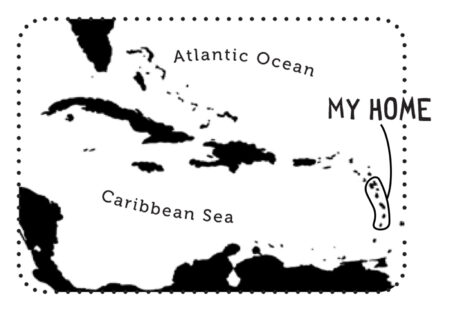 As the name implies, this superb flying swift is endemic to the Lesser Antilles. It is generally fairly common, and at present the species is known to breed on the islands of Guadeloupe, Dominica, Martinique, St. Lucia, and St. Vincent (St. Vincent and the Grenadines). eBird data also reports some observations in the Grenadines—Bequia and Union Island.
As the name implies, this superb flying swift is endemic to the Lesser Antilles. It is generally fairly common, and at present the species is known to breed on the islands of Guadeloupe, Dominica, Martinique, St. Lucia, and St. Vincent (St. Vincent and the Grenadines). eBird data also reports some observations in the Grenadines—Bequia and Union Island.
The Lesser Antillean Swift has a protruding head, a short square tail, and wings that bulge in the middle, cut in at the body, and hook at the end. At first glance it may look like a torpedo with wings whirling through the sky. But spend enough time observing the Lesser Antillean Swift and you will see its black-brown upperparts with a narrow gray rump-band; brown underparts and paler throat. In fact this swift, like many other swifts, spends most of its life on the wing using its speed and agility to catch flying insects. Even copulation occurs in flight!
The Lesser Antillean Swift can be found in a variety of habitats from high altitude pristine mountains to drier lowland savannas and cultivated areas. Highly gregarious, it is often found in flocks of 20-40 individuals. Its stubby dark-gray body and rapid, shallow wingbeats differentiate it from all swallows.
While it doesn’t decelerate often, it does slow down to nest. The breeding season is believed to span from May to July. The nest is built with a mixture of mud, saliva, and other materials the swifts catch in flight. Nests are cup-shaped and built within hollows, trees, caves, or on the sides of cliffs in mountainous areas. Clutch size is 2-3 eggs.
Although not considered a species of conservation concern, there is a serious lack of research and knowledge about this species, making it difficult to accurately assess the species’ status. It’s important to keep in mind that insectivorous birds have undergone some of the steepest declines across all avifauna, due in high part to the use of chemical pesticides applied at industrial scale. Deforestation is also likely to affect the species by reducing available nesting sites. It’s also important to note that basic natural history information on many Caribbean swifts, including this species, is limited, presenting low-hanging fruit for future research. Learn more about this species, including its range, photos, and calls here.
Colour in the Lesser Antillean Swift
Download our West Indies Endemic Bird colouring page. Use the photos below as your guide, or you can look up pictures of the bird online or in a bird field guide if you have one. Share your coloured-in page with us by posting it online and tagging us @BirdsCaribbean #CEBFfromthenest
Listen to the call of the Lesser Antillean Swift
The calls of the Lesser Antillean Swift are a high, sharp twittering.
Puzzle of the Day
Click on the image below to do the puzzle. You can make the puzzle as easy or as hard as you like – for example, 6, 8, or 12 pieces for young children, all the way up to 1,024 pieces for those that are up for a challenge!
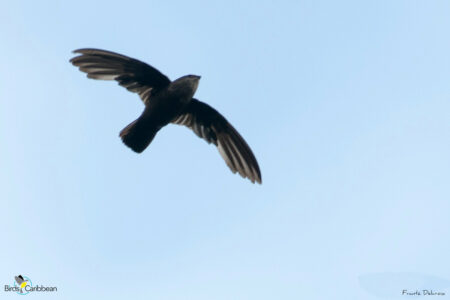
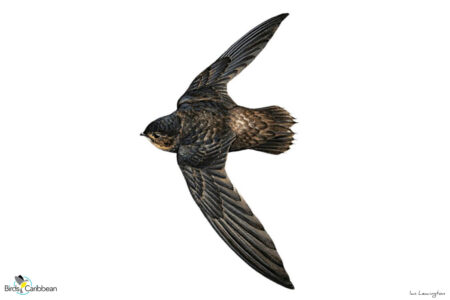
Activity of the Day
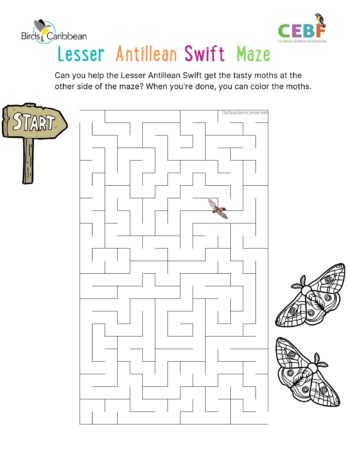 FOR KIDS: Lesser Antillean Swifts feed on insects, swooping through the air to catch them on the wing! Can you help this hungry Lesser Antillean Swift find its way through our maze to to grab some tasty insect food? You can find the correct route here.
FOR KIDS: Lesser Antillean Swifts feed on insects, swooping through the air to catch them on the wing! Can you help this hungry Lesser Antillean Swift find its way through our maze to to grab some tasty insect food? You can find the correct route here.
FOR KIDS AND ADULTS: Enjoy this video of Lesser Antillean Swifts in the wild!

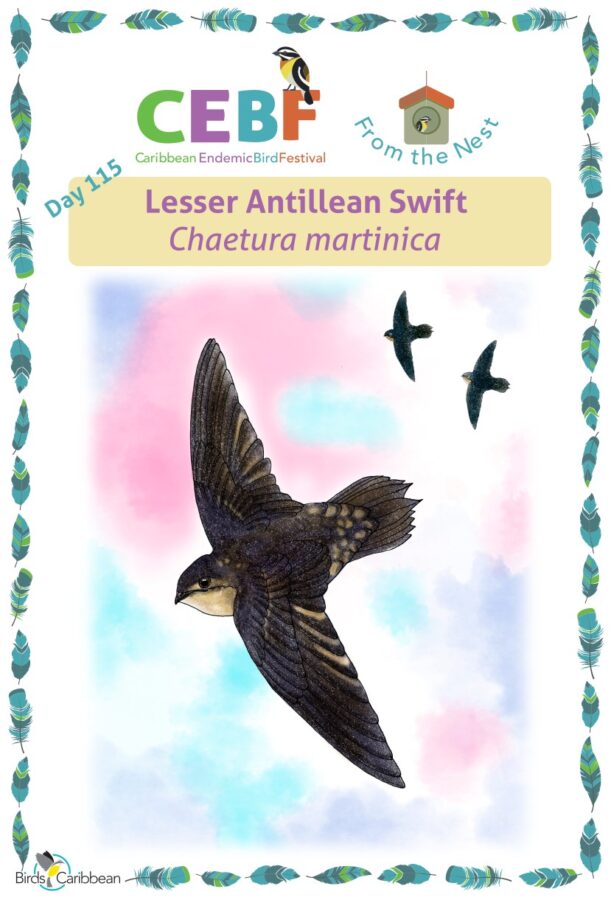
One comment
Comments are closed.